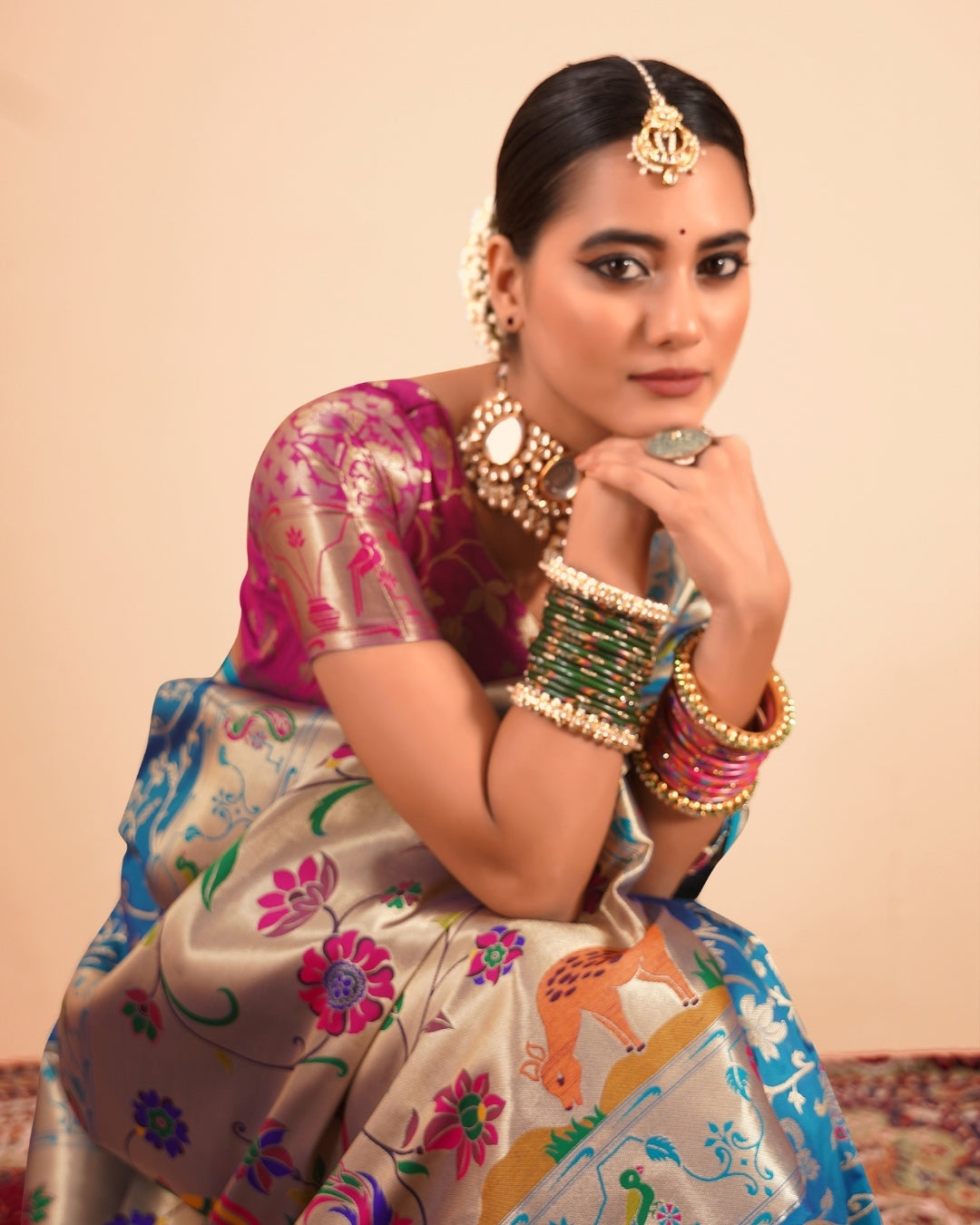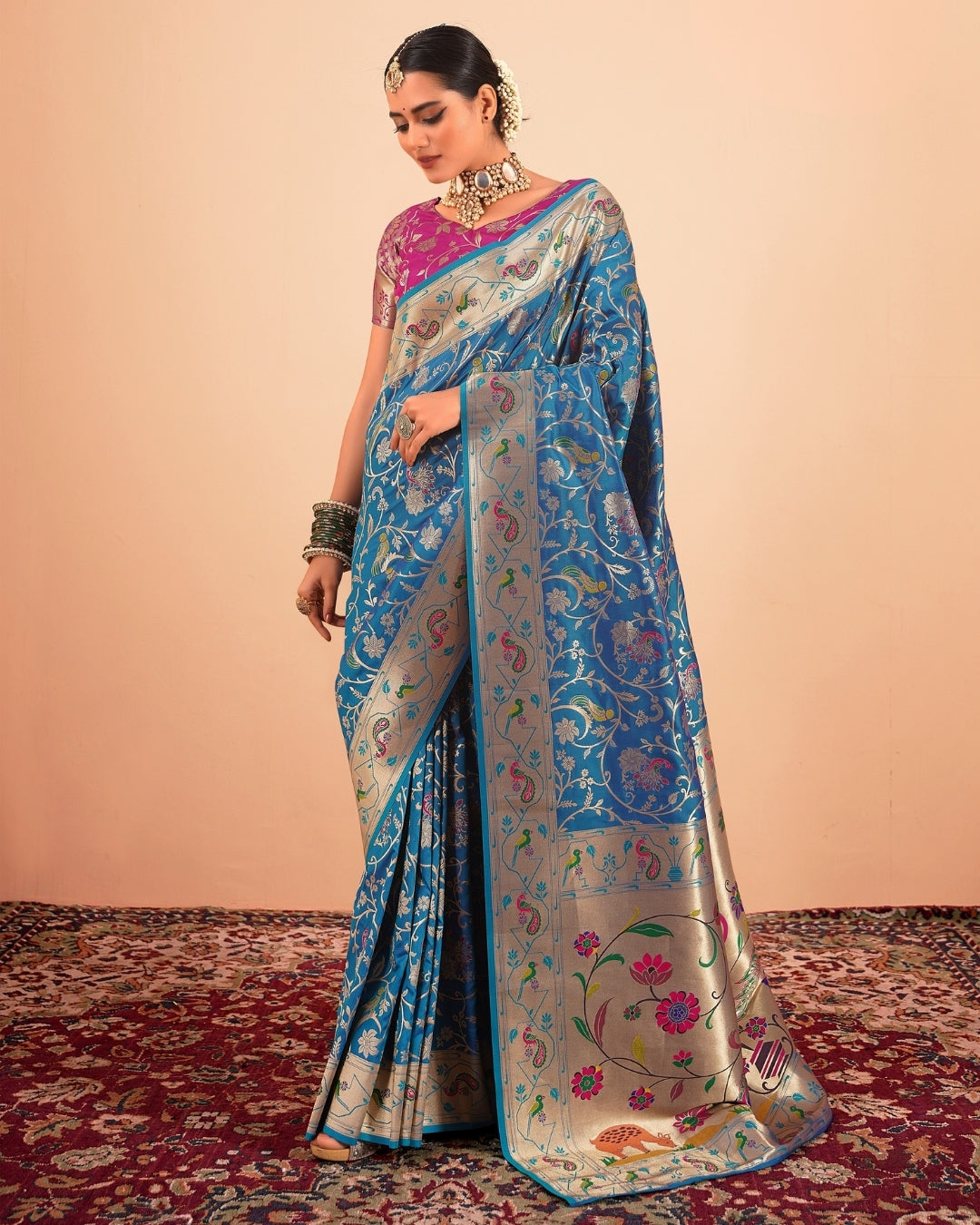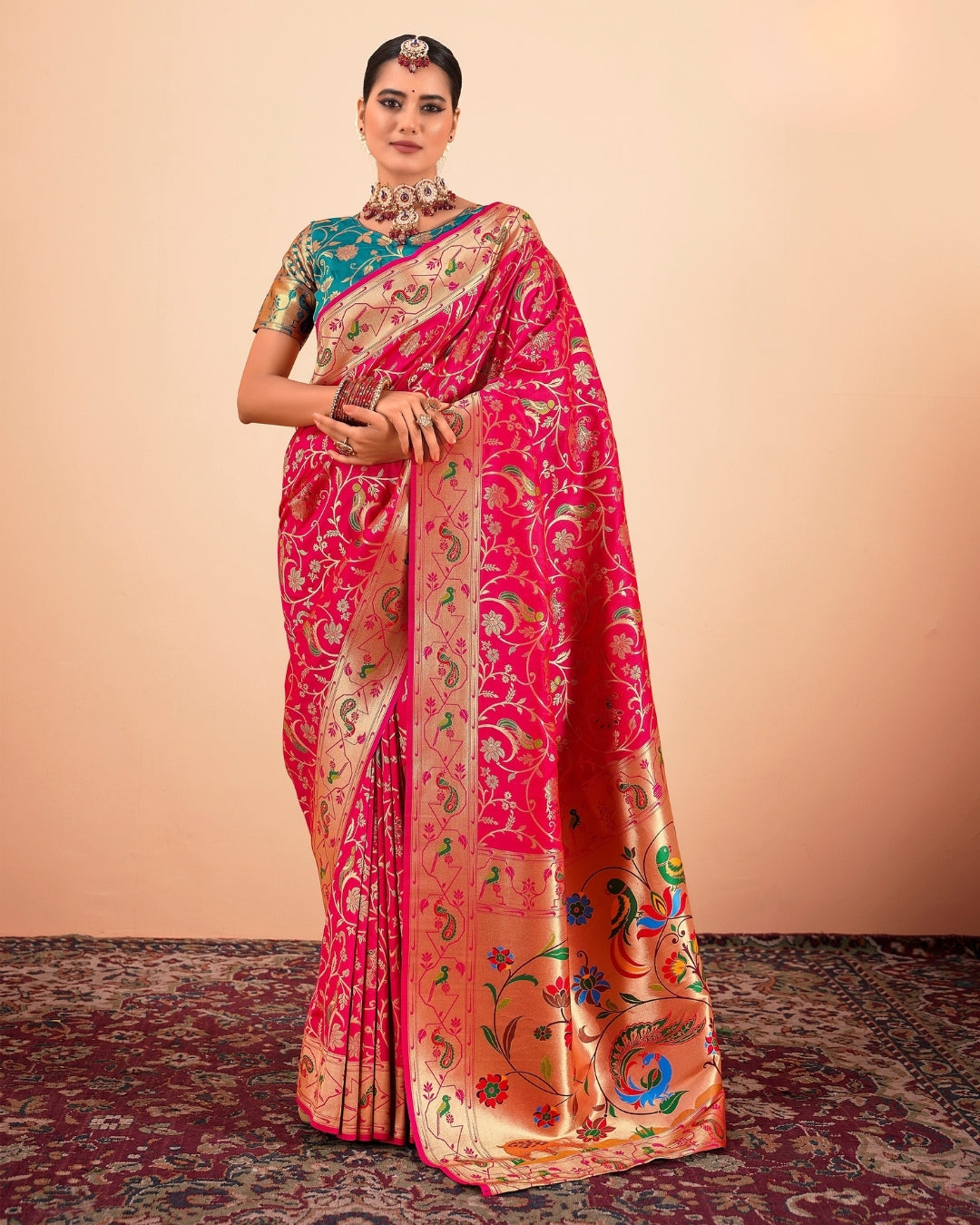Ganesh Chaturthi, the grand festival celebrating the arrival of Lord Ganesha, is a time when devotion, culture, and tradition come alive in their most vibrant form. Among the many elements that enhance the festive spirit, the Paithani saree stands as a timeless symbol of Maharashtrian heritage, weaving together history, artistry, and elegance. Draping a Paithani during Ganeshotsav is not just about fashion—it is about honoring a centuries-old legacy.
The Historic Origins of Paithani Saree

The Paithani saree traces its roots back over 2,000 years, to the town of Paithan in Maharashtra, from where it derives its name. Known as the “Queen of Silks,” it was once considered a royal attire, adorned by queens of the Satavahana dynasty. Handwoven with fine silk and pure gold or silver zari threads, Paithani became a luxury symbol and an heirloom passed across generations.
/local-samosal/media/media_files/DThMhA1lEJUyReGmBZvH.png)
The motifs—peacocks, parrots, lotus, and vines—carry deep cultural meaning, symbolizing prosperity, spirituality, and beauty. Over centuries, Paithani sarees have been treasured during rituals, weddings, and festivals, making them inseparable from Maharashtrian identity.
Paithani Saree and Ganesh Chaturthi: A Divine Connection

Ganesh Chaturthi is not only about rituals and prayers but also about showcasing cultural pride. Women wear Paithani sarees during aarti, visarjan, and family gatherings, as a mark of devotion and tradition. The saree’s golden zari glow beautifully complements the grandeur of Lord Ganesha’s celebrations.
For many families, wearing a Paithani on Ganesh Chaturthi is considered auspicious, symbolizing wealth, grace, and blessings of Lord Ganesha. Just as the festival preserves centuries-old traditions, the Paithani saree continues to embody the artistic spirit of Maharashtra.
Why Paithani is Special for Festivals

- Handwoven Artistry: Each saree takes months to weave, reflecting patience and dedication—values that resonate with devotion.
- Royal Elegance: Its luxurious shine adds regal charm to festive attire.
- Cultural Pride: Wearing a Paithani is a way of connecting with ancestral traditions.
- Auspicious Symbolism: Motifs like the lotus and peacock align with spirituality and festivity.
Modern Styling of Paithani for Ganeshotsav

While Paithani is rooted in history, today it is styled in versatile ways:
- Pairing with traditional gold jewelry like nath, chandrakor bindi, and green bangles.
- Choosing bright festive colors like red, green, purple, and yellow.
- Draping in the Maharashtrian nauvari (nine-yard) style for an authentic festive look.
- Blending with modern blouses for a fusion twist without losing tradition.
Conclusion
The Paithani saree is not just clothing—it’s history woven in silk and zari. During Ganesh Chaturthi, when families unite in devotion, the Paithani becomes a symbol of grace, tradition, and blessings. By draping this saree, women don’t just celebrate a festival; they keep alive the royal heritage of Maharashtra for generations to come.
So this Ganeshotsav, let your devotion shine as brightly as the golden threads of a Paithani saree.


0 comments